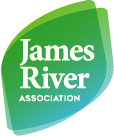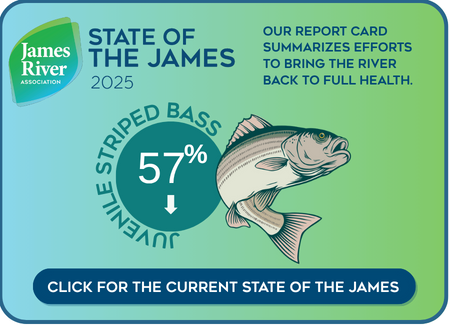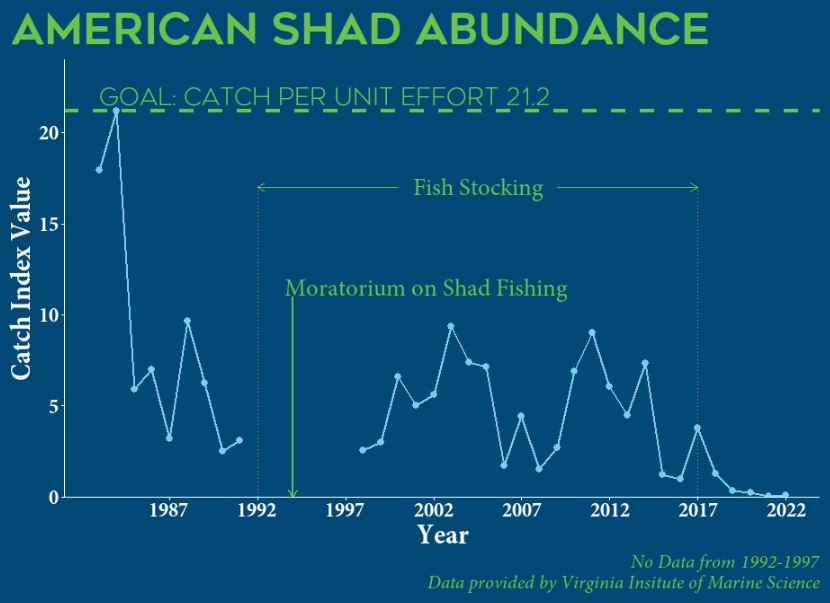Swimming Against the Tide
The Urgent Need to Protect Migratory Fish in the James River
How America’s founding fish and other migratory fish species are facing an alarming decline in the James River.
Once the most culturally and economically important fish to the East Coast, American Shad have been called America’s “Founding Fish.” This species thrived in Virginia’s freshwater rivers and have been an essential species to Indigenous Peoples and generations of Virginians.
Today, however, nearly two generations have grown up after the American Shad fishery was shut down in Virginia. While American Shad are still present in other Virginia Rivers, since 2021, they have scored a zero on JRA’s State of the James report.
But the story doesn’t stop with shad. Other important migratory fish species, such as river herring, Atlantic sturgeon and striped bass or “rockfish,” are facing similar declines in the James and the Chesapeake Bay.
As we work to understand the underlying conditions that are causing these declines, the James River Association is fighting to protect the future of these migratory fish.
The James River is a vital corridor for a diverse array of migratory fish species. These fish, including American shad, striped bass, alewife and blueback herring, and Atlantic sturgeon, play a crucial role in the river’s ecosystem and used to support local economies through recreational and commercial fishing.
Protecting these fish is essential for the health of the river and the well-being of the communities that depend on it.
Migratory fish are fish that travel long distances between different bodies of water. These migrations are generally seasonal and are usually for feeding or breeding purposes. The migratory fish found in the James live in the ocean, or in saltwater for most of their lives, but return to the James to spawn.
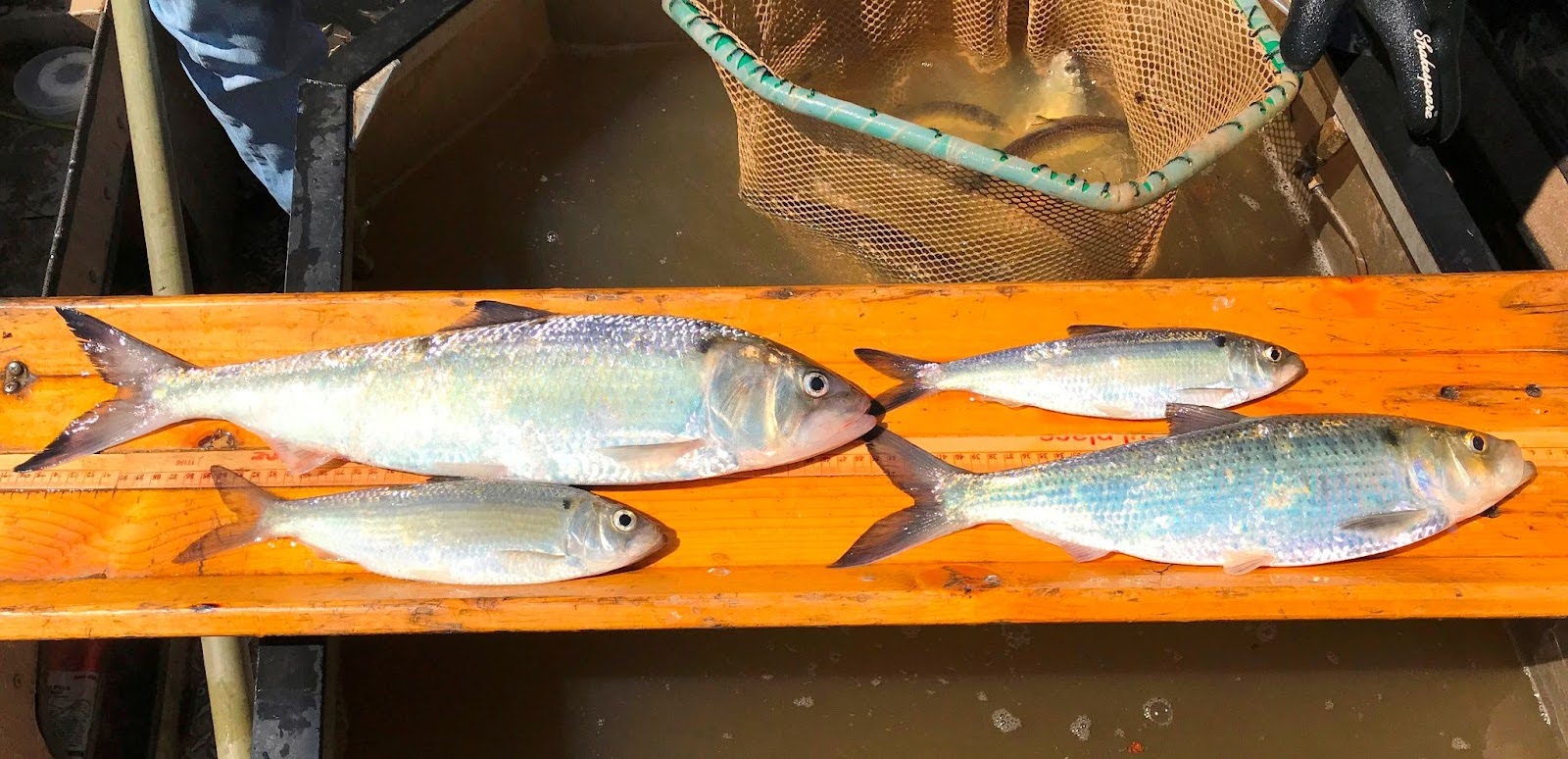
Photo Credit: VA Department of Wildlife Resources Left to Right:
Top Row: American Shad, Alewife
Bottom Row: Blueback Herring, Hickory Shad
American Shad (Alosa sapidissima)
A popular game fish across the East Coast that was once the most valuable fishery in the Chesapeake Bay. Learn more about the American Shad.
Striped Bass (Morone saxatilis)
A prized sportfish that is a staple of the Chesapeake Bay ecosystem.
Blueback Herring (Alosa aestivalis) & Alewife (Alosa pseudoharengus)
These small fish, often collectively referred to as River Herring, play a crucial role in the food web and are an important food source for larger fish.
Atlantic Sturgeon (Acipenser oxyrinchus)
A critically endangered species that once thrived in the James River. Learn more about the Atlantic sturgeon.
This map illustrates the historic and current habitats of several native migratory fish species in the James River. The presumed historic habitat and current habitat are supported by data from the Chesapeake Fish Passage Prioritization tool and historic records. The lines indicate species ranges, with their widths representing the percentage of the species’ population found in the James River. The historic map reflects natural population levels, whereas the present-day map shows the remaining fraction based on available comparative data.
We have seen concerning trends in migratory fish populations in the James River in recent years.
In our 2023 State of the James report, the catch index for American Shad is at zero. While other rivers like the Rappahannock have seen an increase in American Shad over the last five years, their numbers remain alarmingly low in the James River.
This trend has applied to additional migratory fish species, as well.
- In 2024, VIMS researchers completed a survey of Virginia waters and found significantly below-average numbers of recently spawned striped bass in the Chesapeake Bay for the second year in a row.
- River herring, such as blueback and alewife, have also seen decreases in the James River and its key tributaries, such as the Chickahominy River.
- Atlantic Sturgeon were considered functionally extirpated in the James River as recently as the 90’s. While these fish made an impressive comeback in the last 20 years, they remain on the federal Endangered Species list. Researchers are also concerned about the number of “young adults” currently found in the watershed that foreshadow future population numbers. Due to their federal endangered species designation, population data is not publicly available for Atlantic Sturgeon.
Ecological Balance
Migratory fish play a crucial role in maintaining the delicate balance of river ecosystems. They help control and grow populations of other aquatic organisms with nutrient cycling.
Economic Impact
These fish support local economies through recreational and commercial fishing. They can attract anglers, boaters, and tourists, generating revenue for businesses and communities.
Cultural Heritage
Migratory fish have been a significant part of human culture for centuries. They provide food, cultural traditions, and recreational opportunities.
River Health
Monitoring migratory fish populations can help assess water quality and identify pollution sources. Healthy fish populations indicate a healthy river.

Advocacy
JRA advocates for policies that protect migratory fish, such as managing blue catfish, protecting wildlife corridors, and studying the impact of threats to aquatic species.
Join our Action Network to receive calls to action on legislation, permitting, and more.
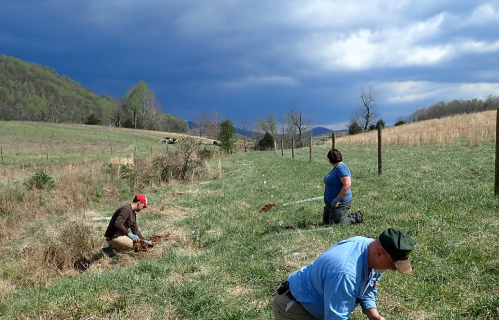
Restoration
Each of us can take actions at home that help build a healthy river where migratory fish can thrive. Improve water quality and local wildlife habitats by planting a riparian buffer, installing a Living Shoreline, or becoming a River Hero Home.

Education
JRA educates school systems and the public on the importance of, and threats to migratory fish. Teachers can encourage students to get curious about what’s happening to migratory fish and explore potential solutions using the Gizmos STEM Case: Explore The Case of the Missing Shad.
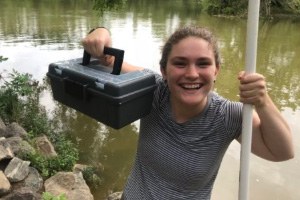
Volunteer
JRA engages volunteers to monitor threats on the river and record water quality.
Become a Water Quality Monitor or River Rat Volunteer.
Join us on April 22 for an event (virtual or in-person) to learn about water quality and how to get involved in our water quality monitoring program.
None of these species are exactly alike and each face their own set of unique challenges. But there are common threats to all migratory fish species in the James that, if addressed, will have a positive impact on the river’s ecosystem.
Habitat and Water Quality
Underwater grass beds are critical nursery areas for young migratory fish, providing “rest stops” as they move downstream in the summer and fall seeking refuge from predators. However, sediment and other pollutants in the water result in poor water quality, these important grasses fail to grow and thrive.
Unfortunately, underwater grass beds are below restoration goals in the tidal James River and are particularly sparse along the mainstem James.
What we’ve done:
The James River’s water quality has improved overall throughout the past few decades. We’ve advocated for investments that have reduced farm and urban polluted runoff, and to upgrade wastewater treatment facilities. These restoration actions are reducing the nutrient and sediment pollution loads to the James River, but we still have work ahead to meet Virginia’s Chesapeake Bay Cleanup goals.
What you can do:
Help improve water quality by planting trees and practicing river-friendly practices at home. Homeowners in the Upper and Middle James can plant streamside buffers. And folks anywhere in the watershed can join our River Hero Homes program to help decrease stormwater pollution.
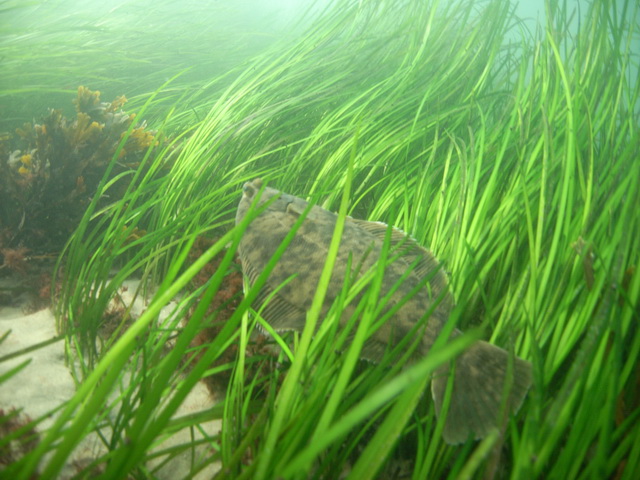
Photo: NOAA
DID YOU KNOW?
Thousands of acres of underwater grass beds once blanketed the shallows of the James River estuary, but these grasses die out when the river becomes too turbid for light to penetrate through the water.
Water Withdrawals
Water intakes are common practice from power companies and other industrial companies on the James River. When river water is taken up through these systems, it can have an impact on fish at any life stage (eggs, larvae, adults) that are unable to swim away from the currents.
These water intakes have mesh screens that filter river water, which directly impact aquatic species in two distinct ways:
- Impingement = aquatic organisms are pinned against mesh screens due to water intake velocities being too high
- Entrainment = Mesh screens are too large to prevent smaller aquatic organisms from being captured by the water intake systems
Virginia has developed standards for industrial water intakes to minimize the impact on aquatic life – but these standards are primarily used when new water intakes are proposed or when old facilities are required to renew their regulatory permits. Many industries that use river water for power generation or manufacturing purposes predate these best practices and do not currently meet Virginia’s standards to minimize impacts on aquatic life.
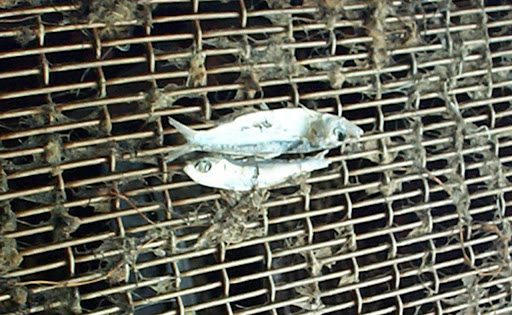
Photo: U.S. Environmental Protection Agency
Juvenile fish caught in the mesh screen of a water intake
What we’ve done:
In the 2024 General Assembly session, our Advocacy Team advocated for funding to study water intake withdrawals and their impact on aquatic organisms.
What you can do:
Join our Action Network to get alerts about upcoming public hearings and permits related to water withdrawals.
Predation
Blue catfish and flathead catfish were first introduced to the James River in the 1970s as sportfish, which today has developed into a trophy fishery attracting many anglers to the region. These non-native catfish are undoubtedly preying on American shad and other native fish.
One study by researchers at Virginia Tech explored diet preferences of these catfish and pointed out that flatheads are more carnivorous feeders (more likely to prey on species in the herring family), while blue catfish tend to be more generalists in their diet. Both will eat shad fry or adults, given the chance, and both are considered invasive species by federal and state agencies in the Bay watershed.
What you can do:
Local – Catch and eat small blue and flathead catfish (below 32 inches). These can be consumed safely alongside other fish species in the James River and can be safely consumed up to 2 times a month.
State – Support state funding for commercial harvesting of blue catfish in the Chesapeake Bay.
Federal – Contact your federal lawmakers to support Chesapeake Bay Restoration Acceleration Act which includes a provision to support the harvest of blue catfish in the Chesapeake Bay.
More information:
Virginia Wild-Caught Blue Catfish: Nutrition and Contaminant Analysis
Chesapeake Bay Blue Catfish: Invasive, but Delicious and Nutritious!
What’s eating our shad?
Non-native catfish of the James River:
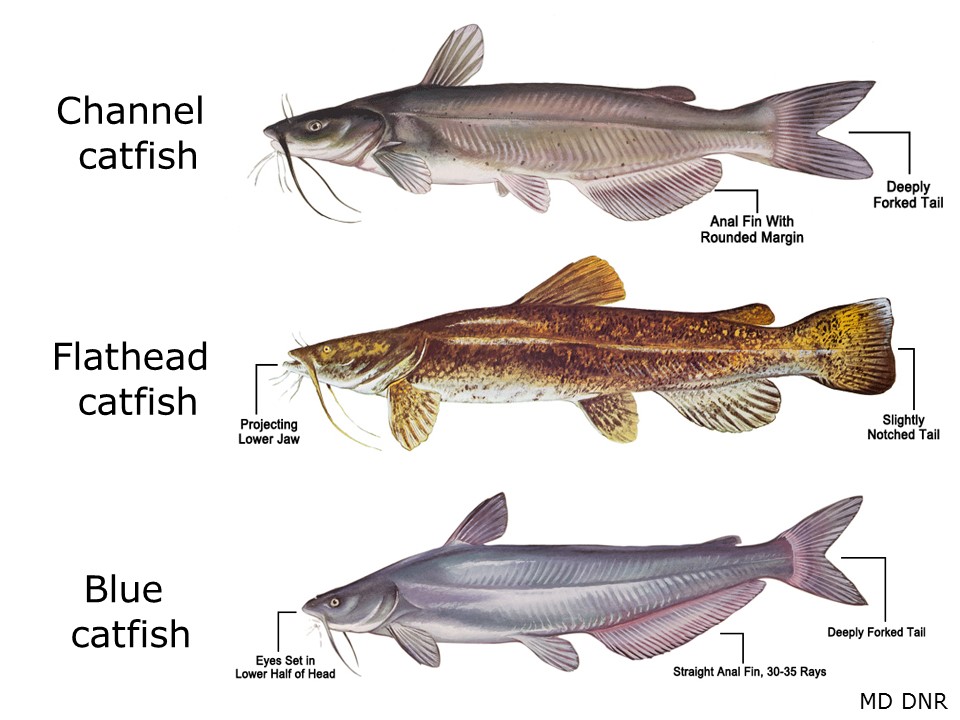
DID YOU KNOW
American shad are important prey for many fish species. Fortunately, shad are prolific spawners and a female can lay up to 600,000 eggs! Shad deal with natural predation by producing a lot of young. But when non-native predator species enter the equation, things get thrown out of balance.
Dams & Barriers
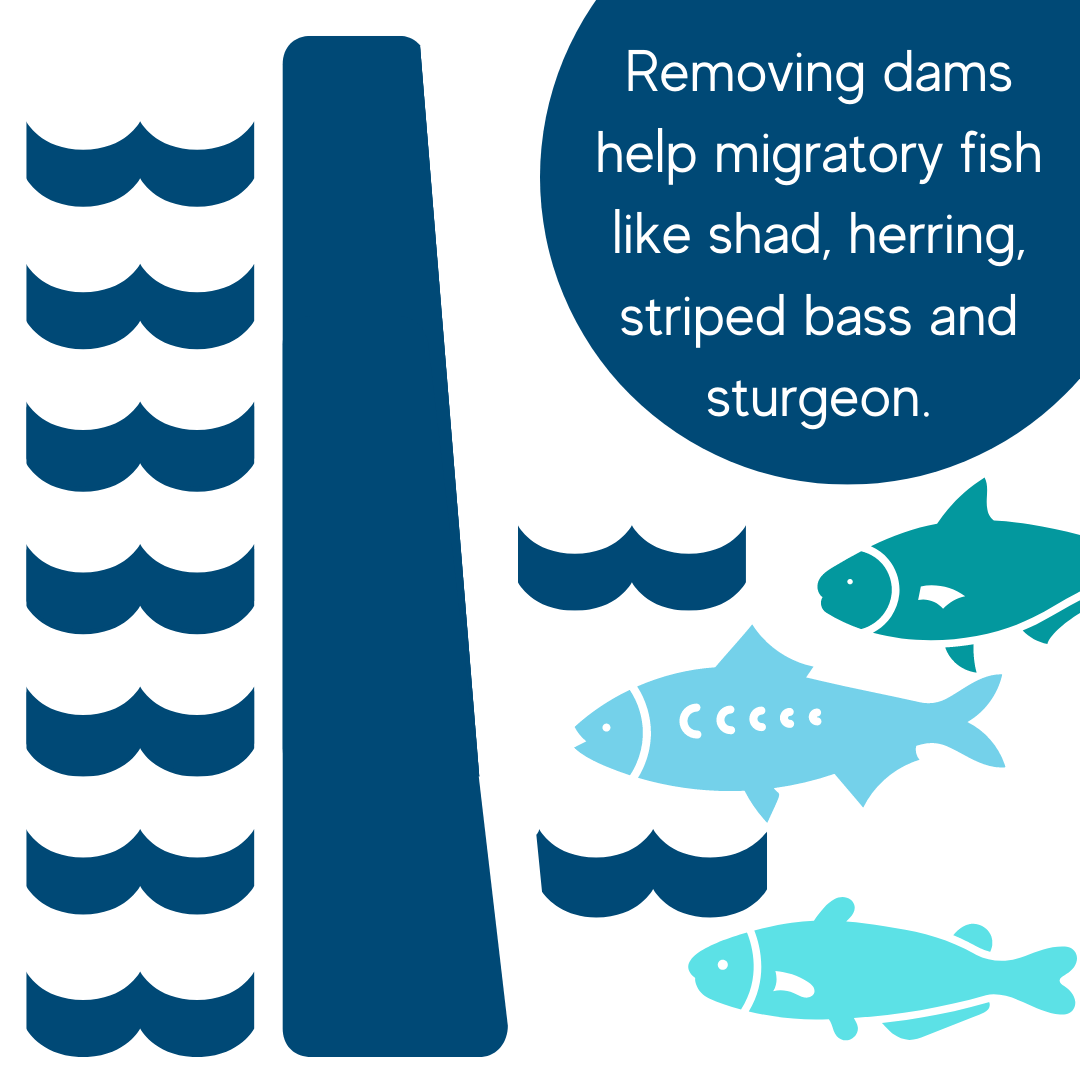
DID YOU KNOW
Virginia Department of Wildlife Resources has a ‘Shad Cam’ installed on Bosher’s Dam. You can watch fish as they make their way through the fish ladder. See how many you can identify!
State and federal agencies in our region have long focused on dam removal as a strategy to help migratory fish. Notably, all of the dams on the James through Richmond and its major tributaries to the James, including the Appomattox and Chickahominy Rivers, have either had dams removed, notched, or had fish passage structures installed on them.
What we have done:
In the 1990s, JRA played a lead role in raising resources to install the Boshers dam fishway at the western edge of the city of Richmond. The fishway installed in 1999 reconnected species like American Shad to over 140 miles of habitat west of Richmond that was previously blocked by the dam.
There is evidence that migratory fish species are reaching Boshers dam, but still many questions regarding how “passable” the falls of the James is for shad. There is a patchwork of old dams in Richmond, which all have been breached, but may still create difficult bottlenecks for shad to ascend the rapids.
What you can do:
Urge your state lawmakers to support a fund for wildlife corridors and aquatic passageways that help ensure migratory fish species can make their way to their spawning grounds each year.
Weather Trends
In Virginia, the climate is trending warmer and wetter. This creates new hurdles for American Shad and other migratory fish species that we’re just beginning to understand. Studies have indicated that warming temperatures can affect growth and mortality rates, shifts in spawning periods, shortened spawning seasons, or shifts in the size of fish at maturity.
More research is needed to understand the impact of changing temperatures on habitat and spawning activity.
What we have done:
JRA worked with the Virginia Institute of Marine Science to develop the American Shad Recovery Plan in 2023. Since then, we’ve advocated for state funding to execute key pieces of the plan. This includes a VIMS study on Existing Spawning Habitat for American Shad, which received funding in 2025.
What you can do:
Plant streamside buffers in the Upper and Middle James to cool streams and improve water quality. Install living shorelines in the Lower James tributaries to improve water quality and provide essential habitat for fish as they migrate up our rivers. Join our Action Network to be notified when critical pieces of legislation are being introduced.
While the numbers are causing alarm, we have reason to be optimistic about our ability to restore American Shad, river herring, striped bass, and Atlantic sturgeon populations in the James River.
First, we have seen encouraging results in other coastal rivers in Virginia. American Shad abundance has improved over the last decade in the Potomac and Rappahannock estuaries – places that have also seen a resurgence of underwater grass beds. With a continued focus on reducing sediment pollution in the James River, we can improve water clarity conditions too, paving the way for underwater grasses and shad to return.
Second, we have seen an amazing comeback of Atlantic Sturgeon in the James River. Once thought to be functionally extirpated, many scientists believed we would never see Atlantic Sturgeon in the James again. However, thanks to conservation efforts and increased research, Atlantic Sturgeon were once again spotted in the James in the early 2000’s and have been seen every year since. Each fall, you can see these gigantic fish breach as they return to their freshwater spawning grounds.
It’s up to all of us to push for the necessary resources, research, and public interest to protect these vital fish species and ensure their recovery in the James. We hope you’ll join us in the fight.
